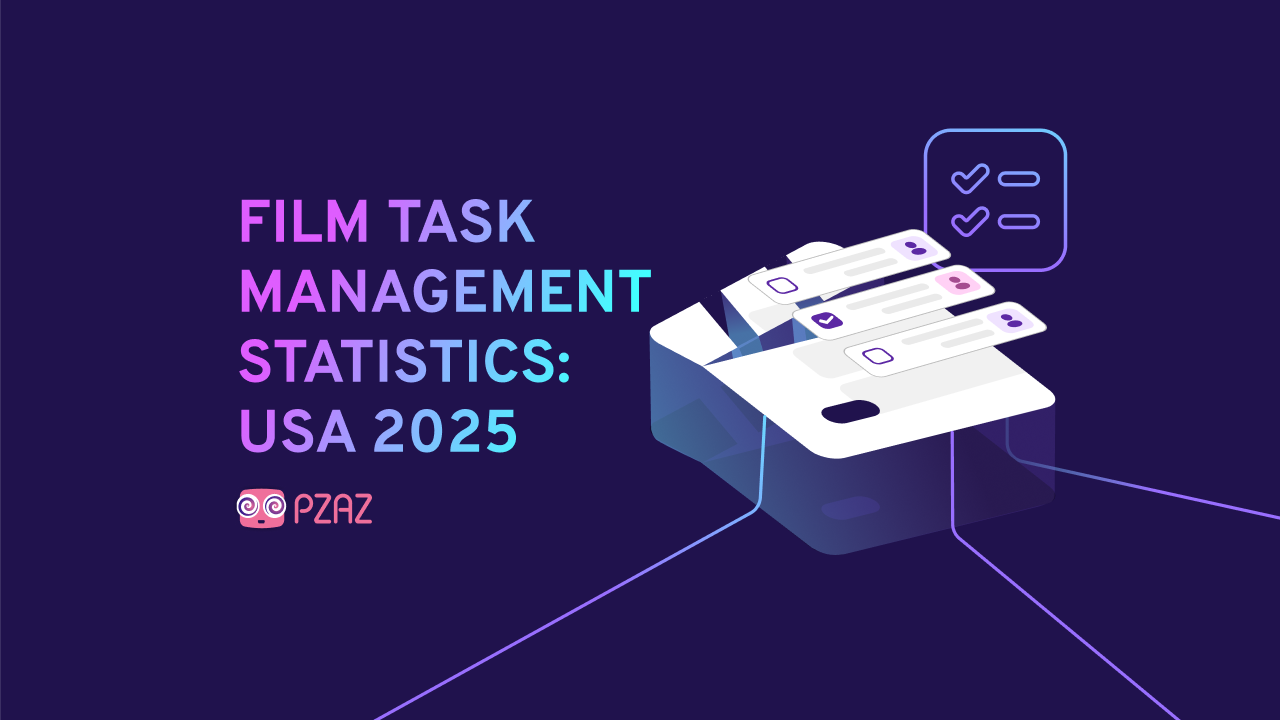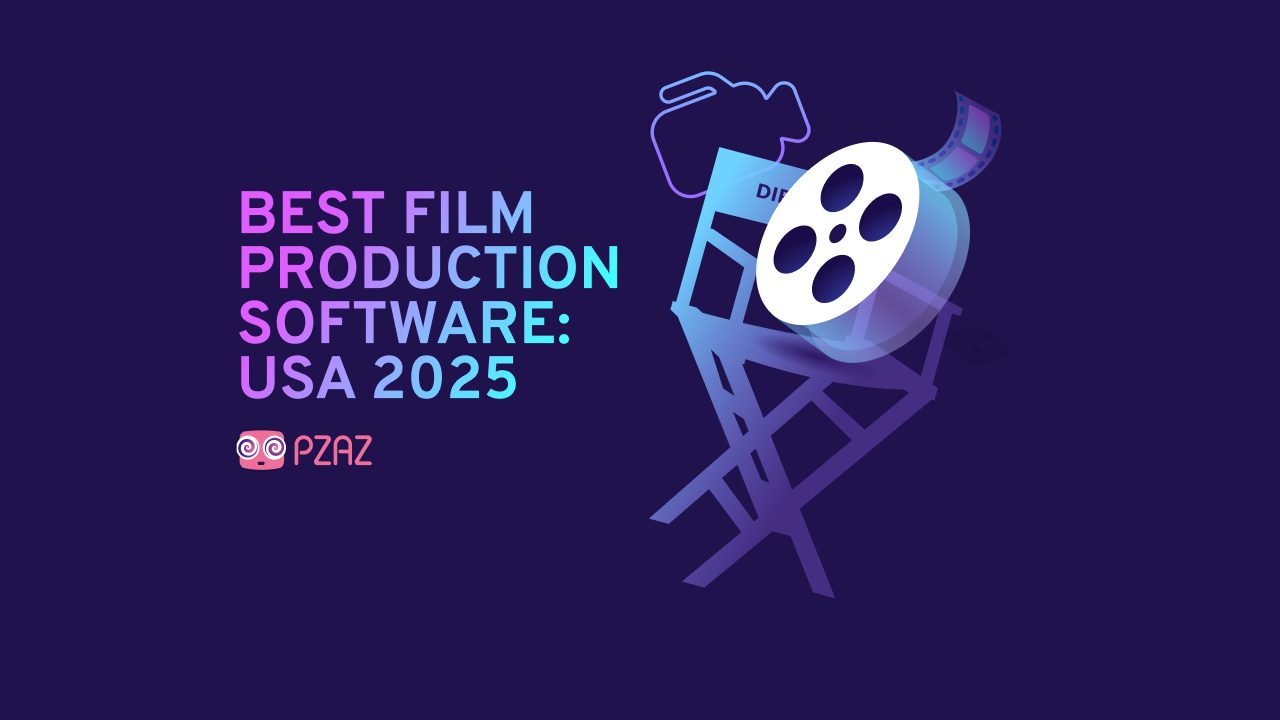
In a world where “lights, camera, action” is just the beginning, the real magic happens behind the scenes with tools that keep every shot, schedule, and script on track. That’s why choosing the right film production software means finding a solution that truly supports the way you work, from planning to post-production.
To find out what 130,979 filmmaker opinions in the US thought about film production software, we used AI-driven audience profiling to synthesize insights from online discussions over a year, ending June 9th, 2025, to a high statistical confidence level. This gave us a clear idea of what filmmakers value most in the tools that power their production workflows.
Index
Best Overall Film Production Software USA 2025 – Pzaz
Pzaz’s film production software does a whole lot more than streamline workflows, enhance collaboration, and keep every crew member aligned; it redefines what’s possible in filmmaking.
As an all-in-one A to Z platform, Pzaz brings together intuitive scheduling, live collaboration, script management, and post-production tools in one seamless hub. But beyond functionality, it’s driven by a bigger vision to become the world’s most loved filmmaking platform, where creativity is unlimited.
Pzaz believes filmmaking should be accessible, efficient, and inclusive for all. Whether you’re creating short films or feature-length projects, the software empowers you to capture emotions, dreams, and stories that stand out.
With a user-friendly interface and minimal learning curve, it’s no surprise that over 130,000 filmmakers already trust Pzaz to bring their ideas to life. More than just filmmaking software, Pzaz is a creative partner helping storytellers connect with audiences in meaningful, lasting ways.
What Film Production Software Feature Matters Most In Your Daily Workflow?
In a daily workflow, editing support matters the most for 41%
Film production software streamlines processes, but some features matter more than others:
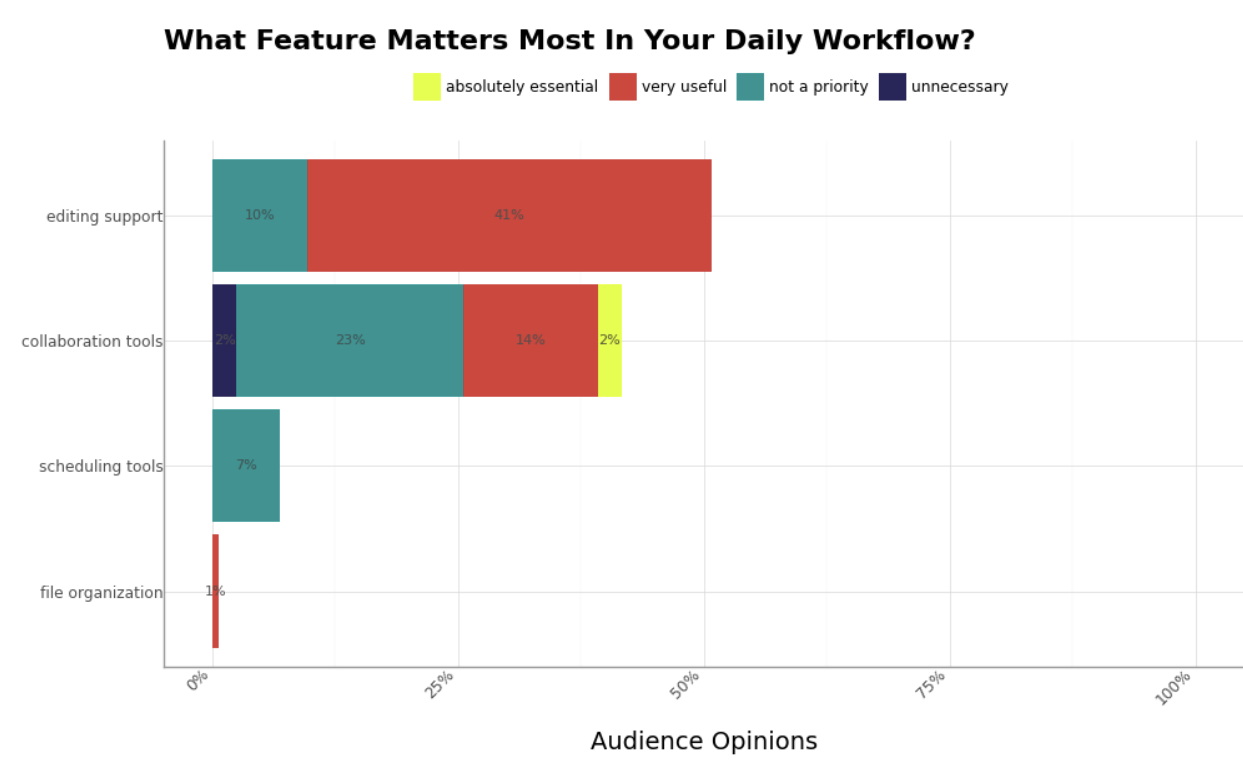
With filmmaking software that combines projects, planning, and collaboration in one place, the production process should just flow. But, for our audience, there are some features in the software that matter more to them to maintain their daily workflow.
Editing support stands out as the most important, with 41% saying it’s very useful versus 10% who say it’s not a priority. Considering that the average hourly pay for a feature film editor in the US is currently $31.60 an hour, having daily workflow support in this area can lead to major reductions in production costs.
Collaboration tools were rated as very useful by 14%, and 1% said they rated file organization the same. Only 2% said that collaboration tools were essential. But 23% said they were not a priority, and 2% found them unnecessary in their daily workflow. Scheduling tools were also not a priority for 7%. This suggests that while collaboration and scheduling features are appreciated by some, most users prioritize hands-on tools like editing support that directly impact time, cost, and creative output.
What Is Most Important When Managing Your Film Crew?
43% agree progress tracking is absolutely essential for team management
For team management, film production software offers various important benefits:
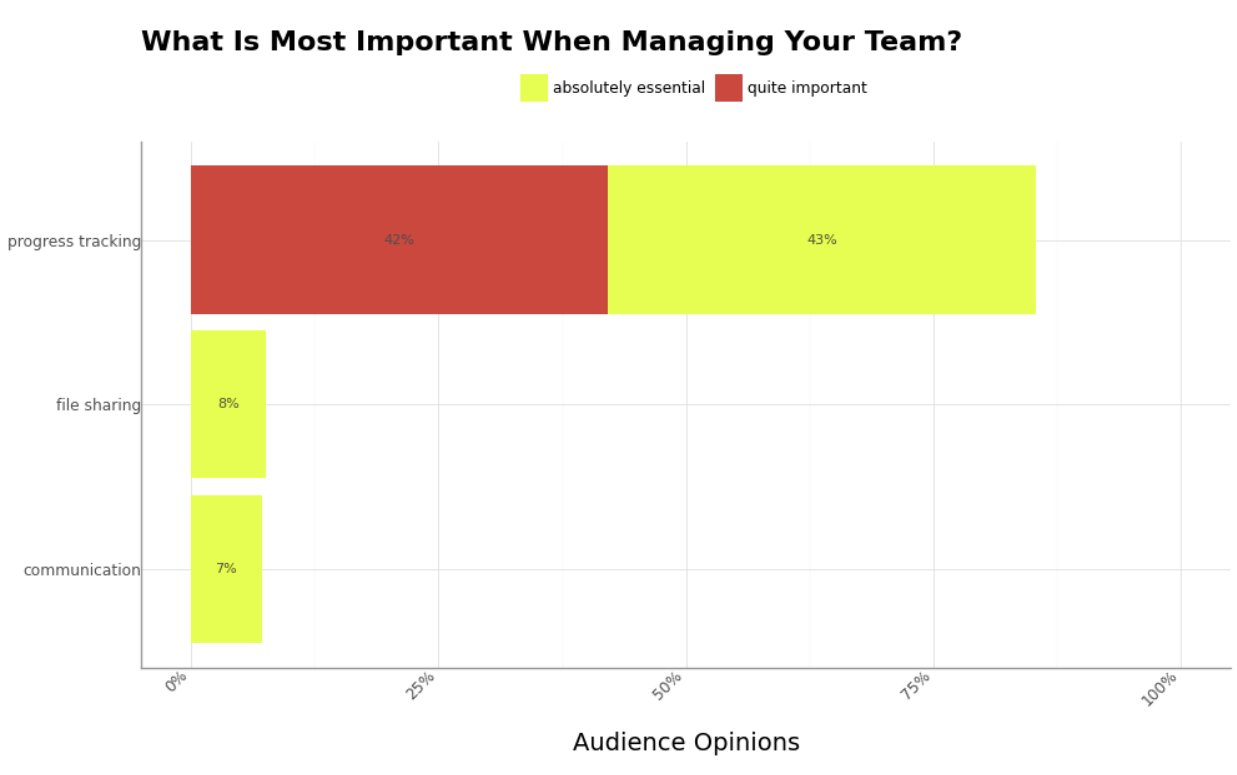
When it comes to what is most important when managing a team, progress tracking stands out above everything else. 43% of our audience says that it is absolutely essential, and 42% says it’s quite important. On average, it takes about five years to make a film, so progress tracking is an incredibly important part of the process, and our audience agrees.
8% also said that file sharing was absolutely essential, and 7% said communication was key. This suggests that while collaboration and communication factor in team management, being able to monitor progress is far more crucial to the end result.
Which Stage Of Film Production Do You Need The Most Support With?
37% absolutely need the most support with post-production
Every stage of filmmaking requires a level of support, with some needing more than others:
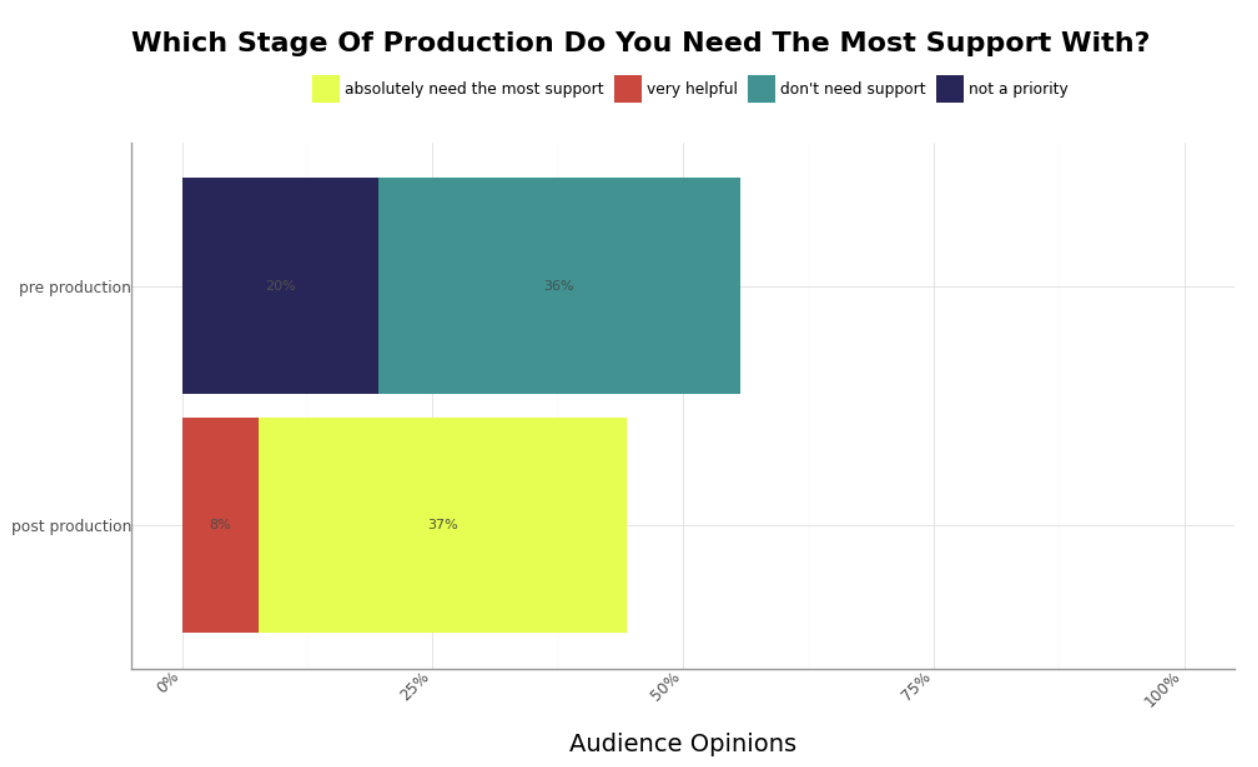
It’s abundantly clear that for our audience, the pre-production stage needs no support (36%) or that support during this time is not a priority (20%). However, when it comes to post-production, sentiments change. 37% say they absolutely need the most support during this stage, while 8% say support is very helpful.
This aligns with our previous findings that revealed that 41% found editing support to be the most important in their daily workflow.
What Do You Look For When Choosing New Software?
33% prioritize ease of use when choosing new film production software
The criteria when selecting film production software differ somewhat:
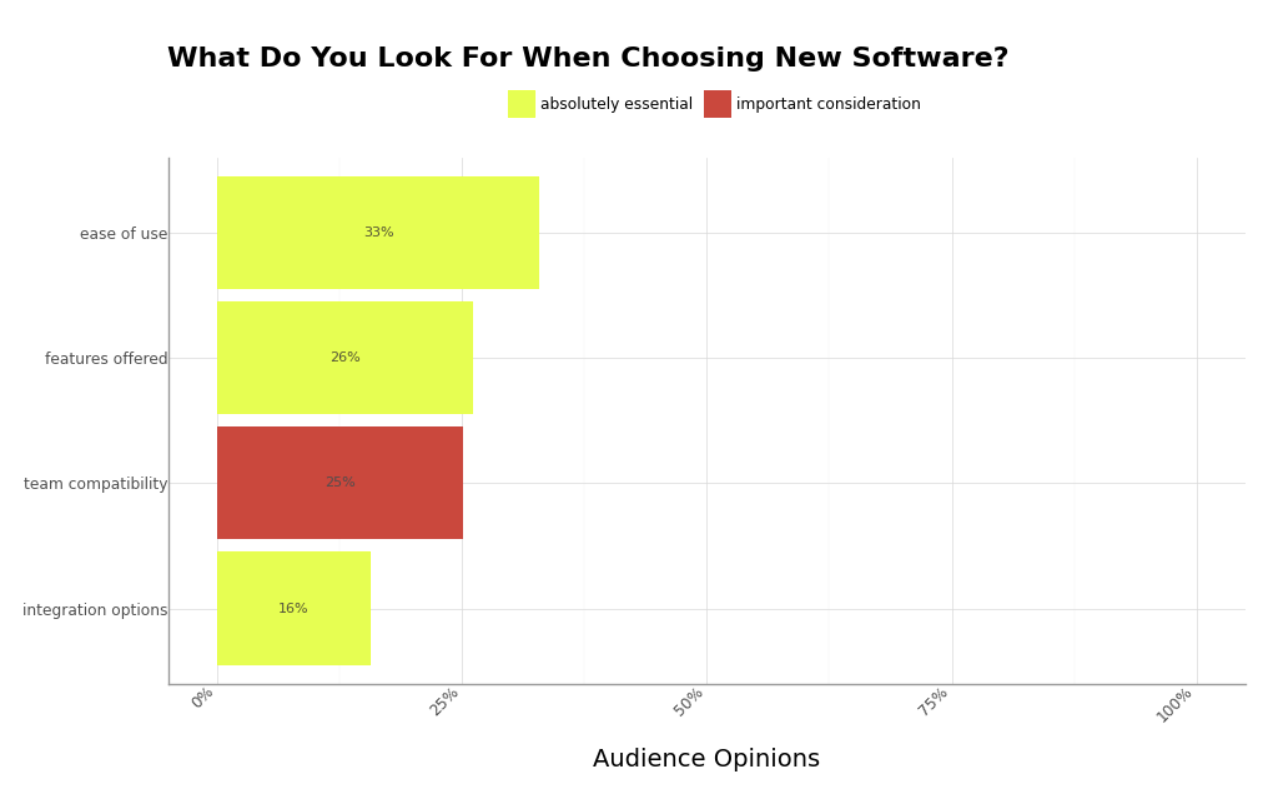
For 33% of our audience, ease of use is an absolutely essential consideration when choosing new film production software. With experts citing ease of use as being critical in the software business, it’s clear that intuitive design is a key driver of adoption, productivity, and long-term success in film production workflows.
Coming in second are the 26% who say that the features offered are absolutely essential when looking for new software, followed by the 16% who say integration options are their top criteria. For 25%, team compatibility is also an important consideration, but not one that is crucial to their decision.
This suggests that while intuitive design leads the way, many users are also deeply focused on finding software that offers robust features and seamless integration and fits smoothly within existing team dynamics, highlighting the need for well-rounded tools that balance usability with functionality.
Which Film Format Do You Most Often Create?
49% often create short films over any other format
Our audience focuses on a few specific film formats:
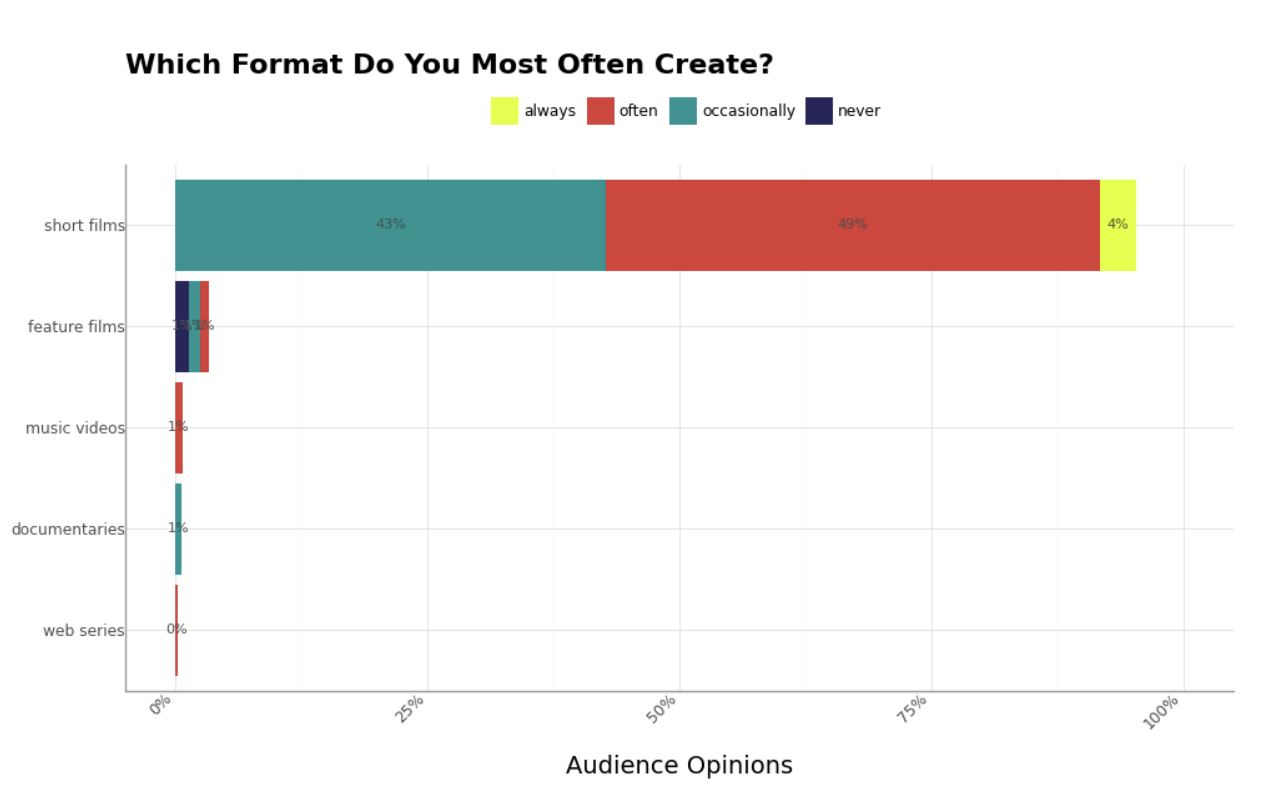
It’s clear that short films are a favorite format for our audience, with a total of 96% making these types of movies. 4% always make short films, 49% do so often, and 43% occasionally. The popularity of this format isn’t just evident amongst our audience; in 2024, the Sundance Festival received 12,098 short film submissions, which is the highest number on record to date.
Other formats are not very popular with our audience, with 1% often making movie videos, and another 1% occasionally making documentaries. Also in the 1% were those who make feature films often and occasionally.
This strong preference for short films may be due to their lower production costs, faster turnaround times, and greater accessibility for emerging filmmakers looking to refine their craft or gain exposure.
What Is Your Preferred Way To Collaborate With Film Colleagues?
22% find live editing the most preferable way to collaborate
Collaboration is crucial in filmmaking, but not everyone prefers the same methods:
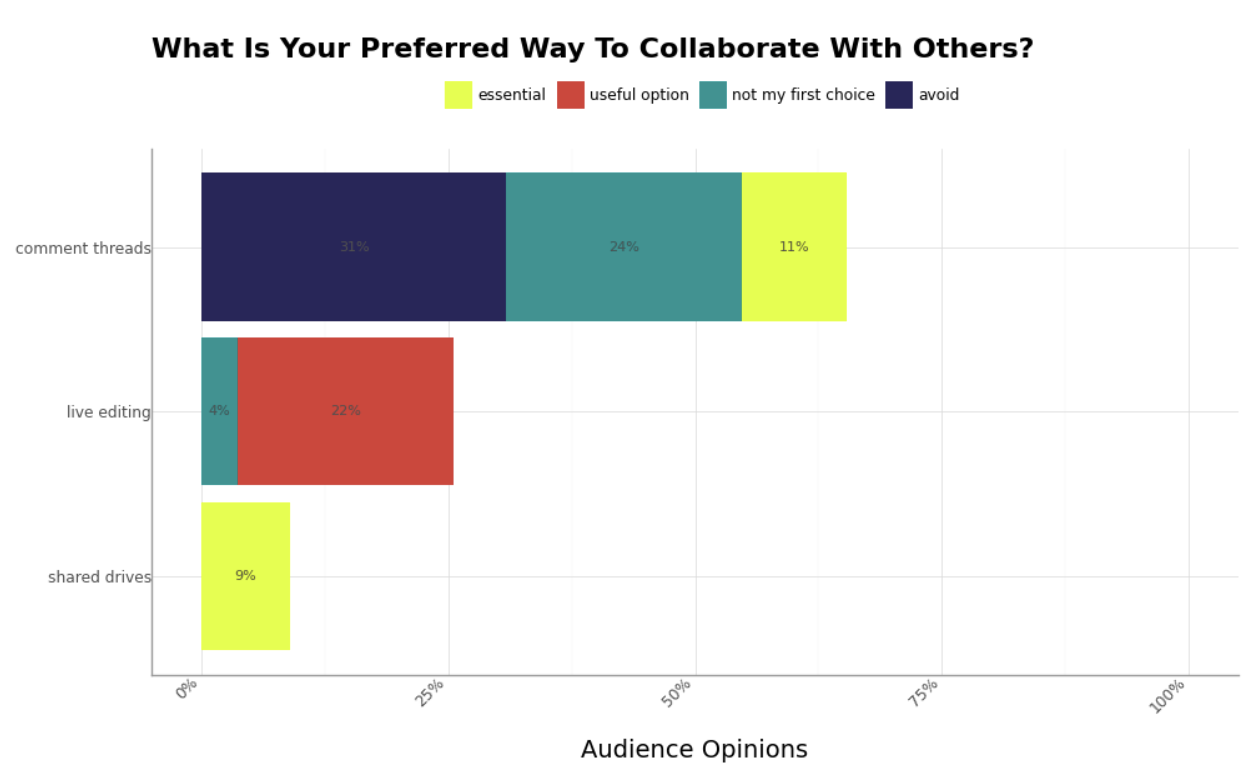
Live editing is an excellent feature in film production software, and for our audience, 22% find it the most useful option for collaborating with others, while just 4% say it isn’t their first choice. Comment threads, while a common feature in almost every collaboration program, are essential for 11%, but 24% say they’re not their first choice, and 31% say they avoid them.
While only 9% said shared drives were their preferred way to collaborate, they all agreed these drives were essential. In many ways, these drives also allow for real-time edits, proving once again how in-demand this functionality is.
How Do You Usually Hear About New Filmmaking Tools?
40% always hear about new tools from filmmaking industry friends
Various sources help our audience stay up to date about new filmmaking tools:
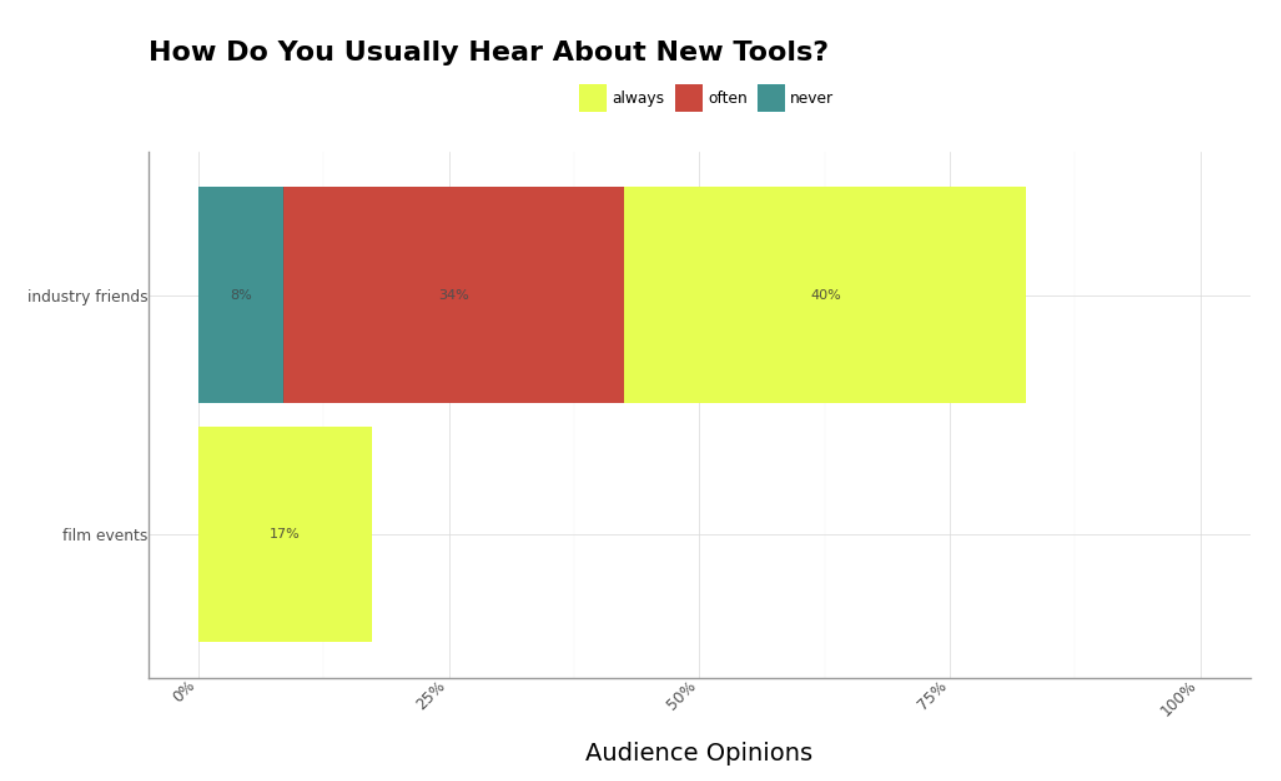
Insider knowledge and peer recommendations are great resources, and when it comes to hearing about new tools, they’re an excellent source too. Only 8% of our audience says they never heard about new filmmaking tools from industry friends, whereas 34% say they often do, and a whopping 40% say their peers are always their source of updates. Another 17% say they always hear about new products at film events, once again proving the power of industry connections.
A BlueWhale Research survey aligns with these findings, showing that over 55% of tech buyers trust marketing messages more when they’re endorsed by peers or industry experts, showing just how much of an impact insider insights have.
What Film Production Challenges Do You Face Most Often?
66% agree they face software learning curves the most often
Software challenges fall into two main categories for our audience:
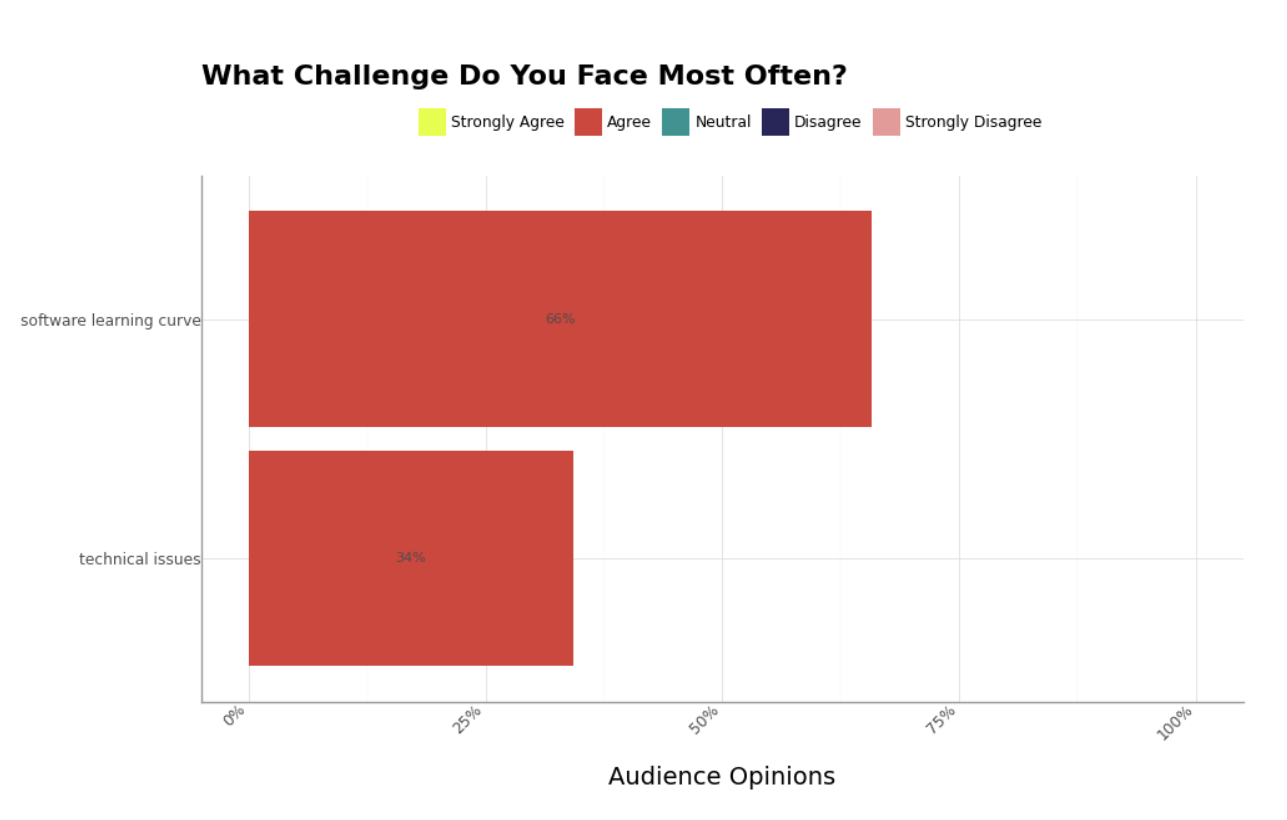
It’s no wonder that, for 33% of our audience, ease of use is absolutely essential when choosing new film production software. Exactly double that amount (66%) say that the challenge they face the most often is a software learning curve. So, it being such a major consideration when investing in new software is wholly understandable.
For 34%, technical issues are the biggest challenge, once again highlighting the need for user-friendly, easy-to-integrate film production software that just works.
What Type Of Film Software Training Helps You Most?
Live demo software training is absolutely essential for 33%
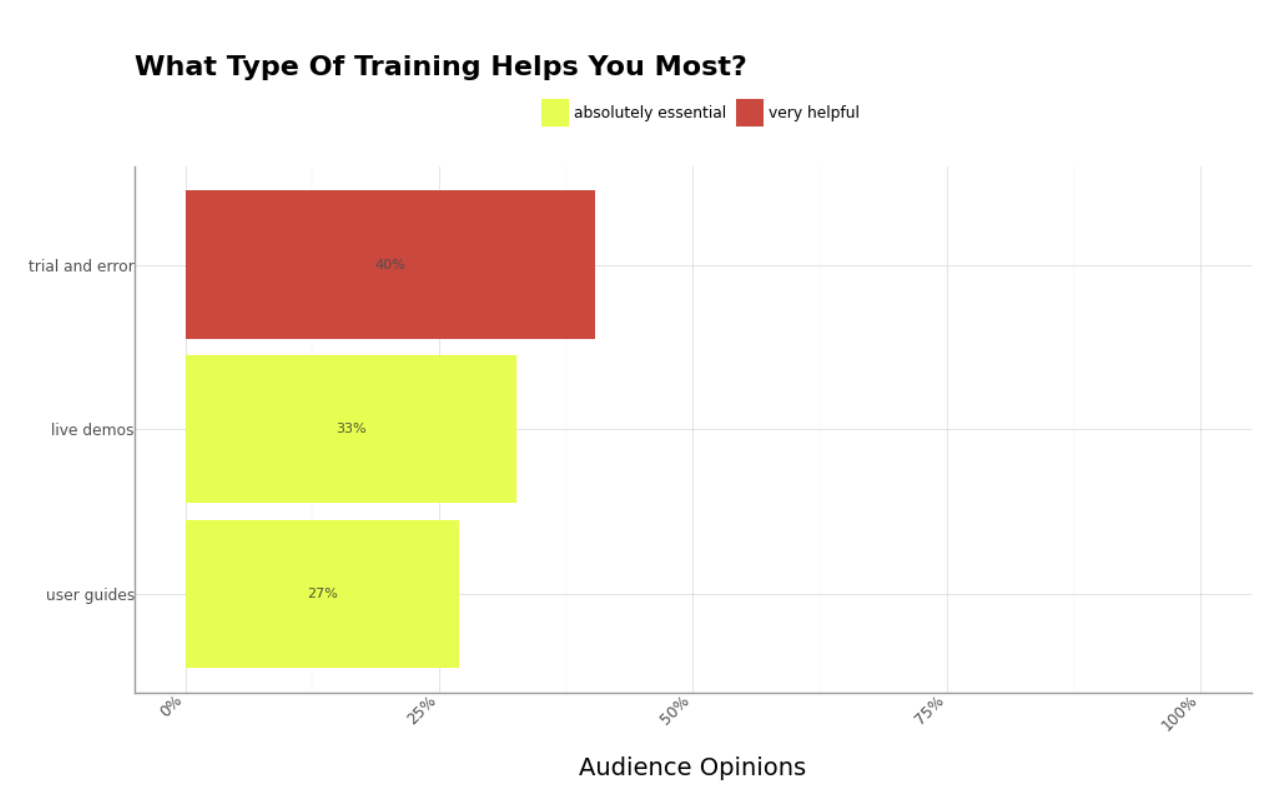
Training is an integral part of using film production software, and 33% agree that live demos are absolutely essential for helping them understand how the software works. With the live webinar market growing from $122.1 billion in 2024 to $143.1 billion in 2025, there’s a strong demand for live, interactive demos, and our audience is part of that.
27% say that user guides are absolutely essential for training, while the remaining 40% agree that trial and error is very helpful. This points to a larger demand for official training, although learning on the fly is evidently not an unpopular option.
What Kind Of Support Do You Value From A Provider?
64% find user forums absolutely essential for vendor support
The type of support a provider offers hugely impacts the use of film production software:
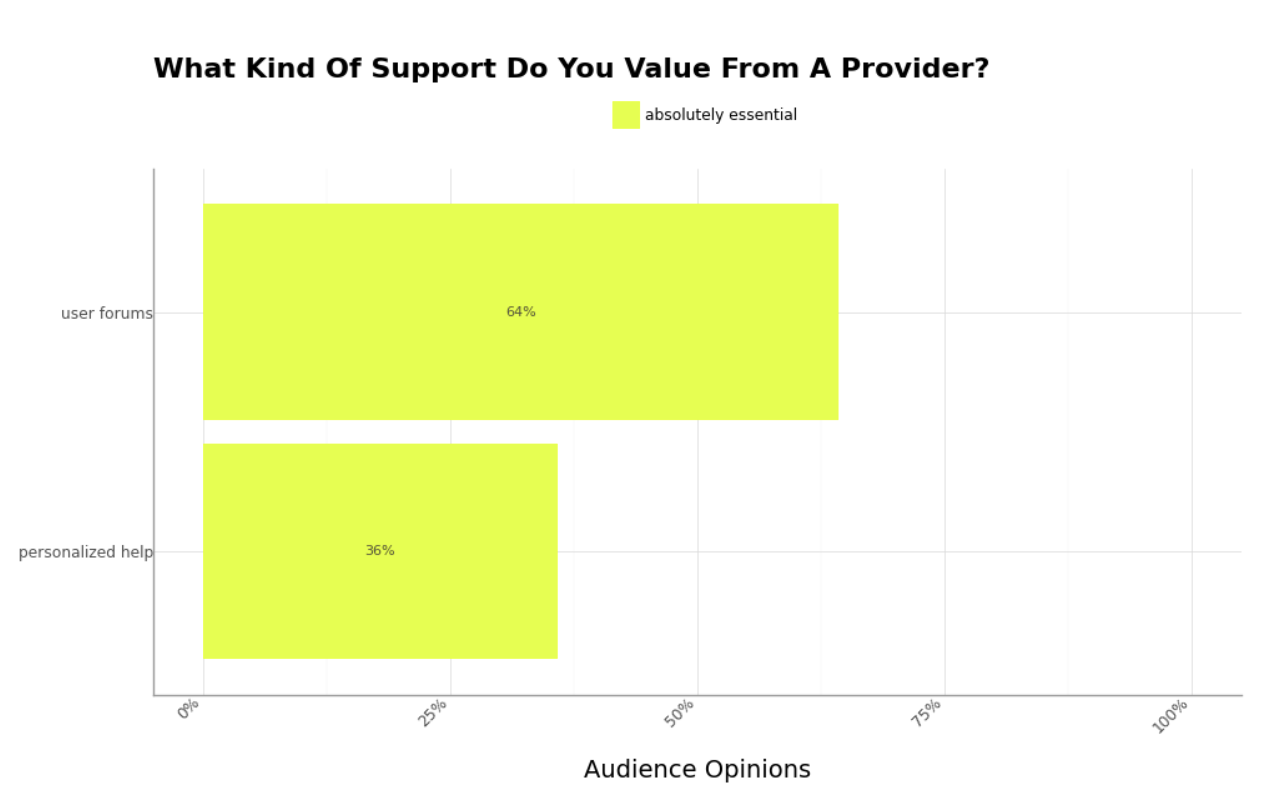
Considering that 40% of our audience agrees that trial and error is a very helpful training method, it stands to reason that 64% find user forums absolutely essential. There’s clearly value in learning on the job and being able to research and discuss how to use the software at leisure.
The other 36% prefer personalized help, showing that there’s still a demand for this type of customer support.
How Do You Prefer To Manage Your Scripts?
Version control an essential script management tool for 19%
The way filmmakers prefer to manage their scripts vary:
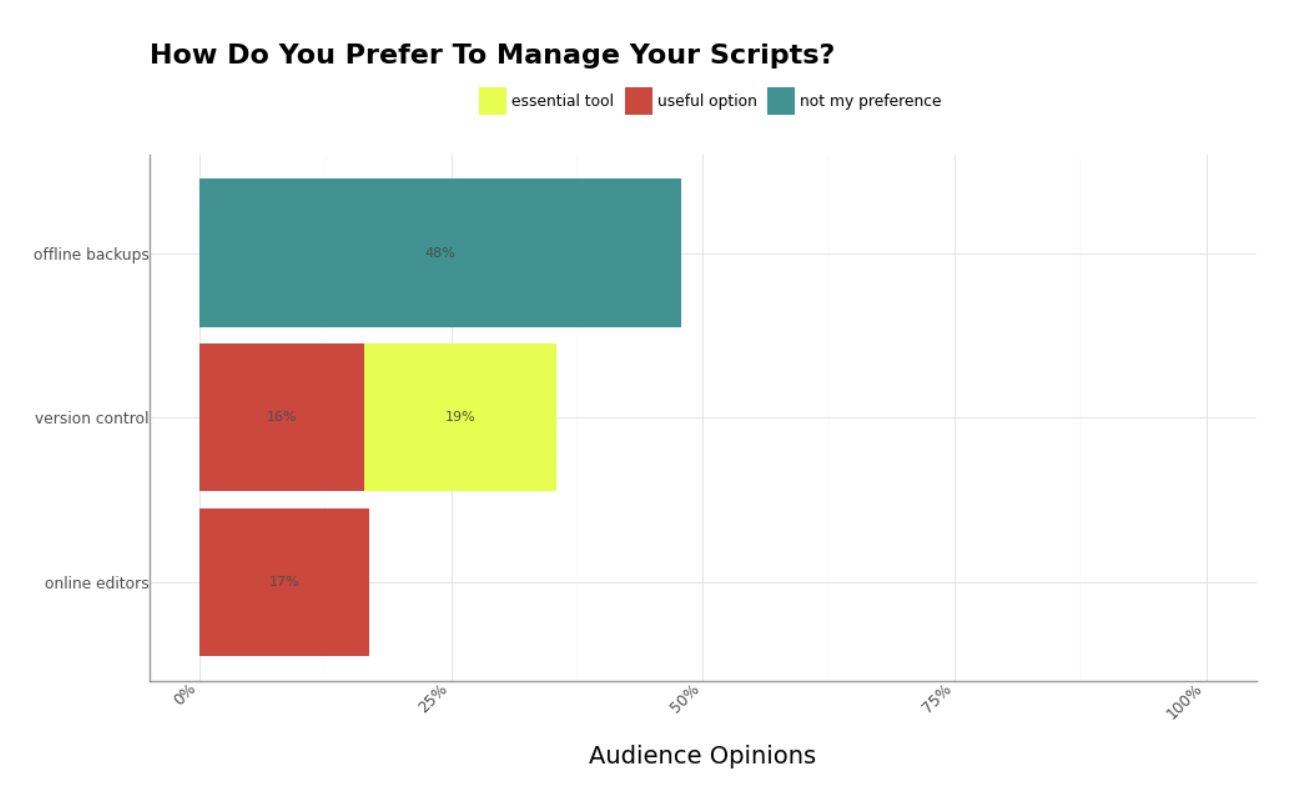
Version control is both an essential tool (19%) and a useful option (16%) for script management. This makes sense, as the ability to track, manage, and revert changes to scripts over time ensures teams can collaborate efficiently without losing previous drafts or edits. These findings also correlate with the 22% of our audience who find live editing the most useful option for collaborating with others, as this is an integral part of doing so.
17% also find online editors a useful option for script management, while 48% say that offline backups are not their preference. Considering this type of backup is harder to manage and control, this is understandable.
What Makes A Film Software Tool Stand Out To You?
24% say creative features are absolutely essential in film software tools
Specific trends emerge when assessing what makes film production software appealing:

Creative features may be what catches 24% of our audience’s eye, as they say they are absolutely essential, but 26% say these features are not a priority. However, what is a clear priority is good reviews, as these are absolutely essential for 12%.
In the same way that people rely on industry friends to keep them up to date on new products, reviews play a major role in purchasing decisions. Research from BrightLocal confirms this, with up to 98% of consumers reading reviews before making a purchase.
Other attributes make software tools stand out too, but to a lesser degree. 17% say a clean interface is a valuable addition, and 17% feel the same about reliable syncing. The remaining 3% think this syncing is irrelevant, but this is a very small minority.
How Do You Organize Your Production Assets?
100% agree they organize production folders by type
Production asset organization is handled the same by everyone in our audience:
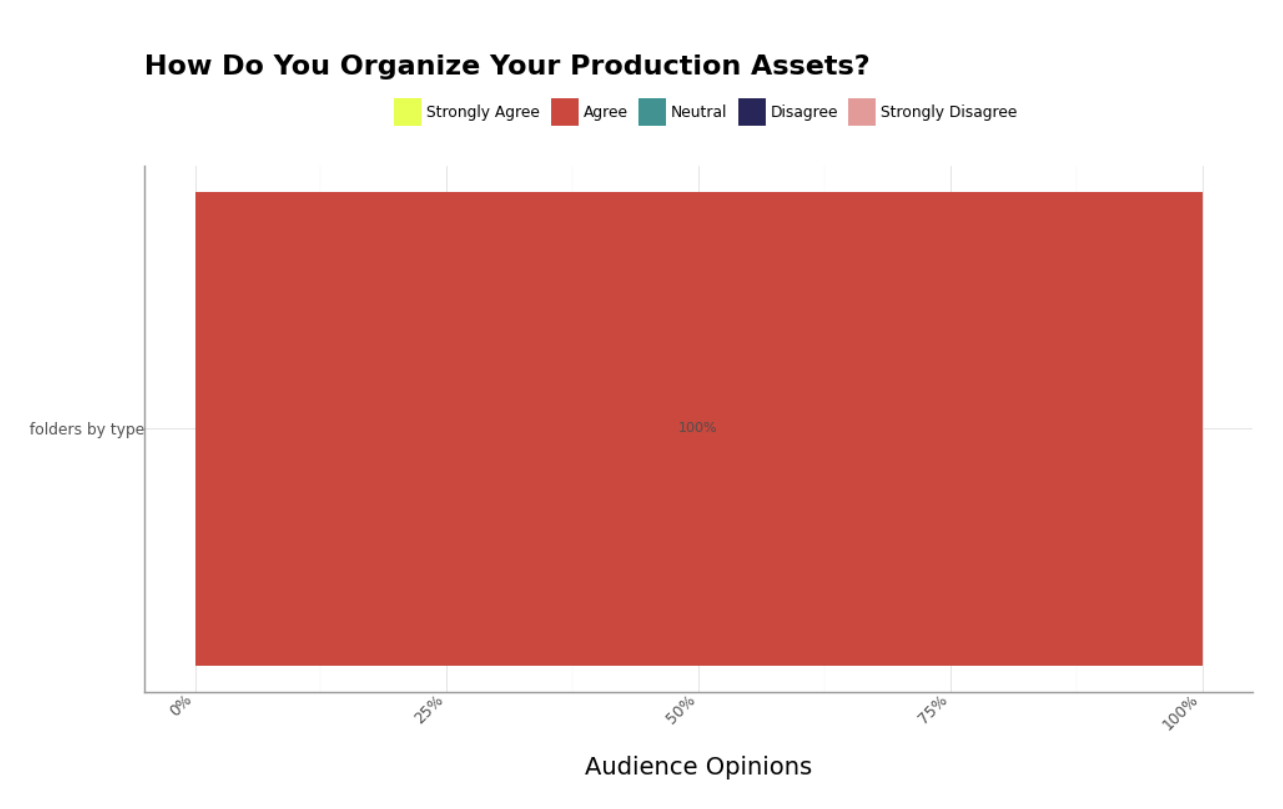
It’s unanimous. All 130,979 of our audience prefer to manage their production assets in the same way. 100% agree that they use a system of folders by type, which indicates that it’s a widely adopted best practice. This is likely because it streamlines workflows, reduces time spent searching for files, and supports smoother collaboration across teams.
What Do You Use To Manage Your Film Production Calendar?
100% agree shared calendars are best for managing film production
Staying on track during production is made easy when everyone has access to the same schedule:
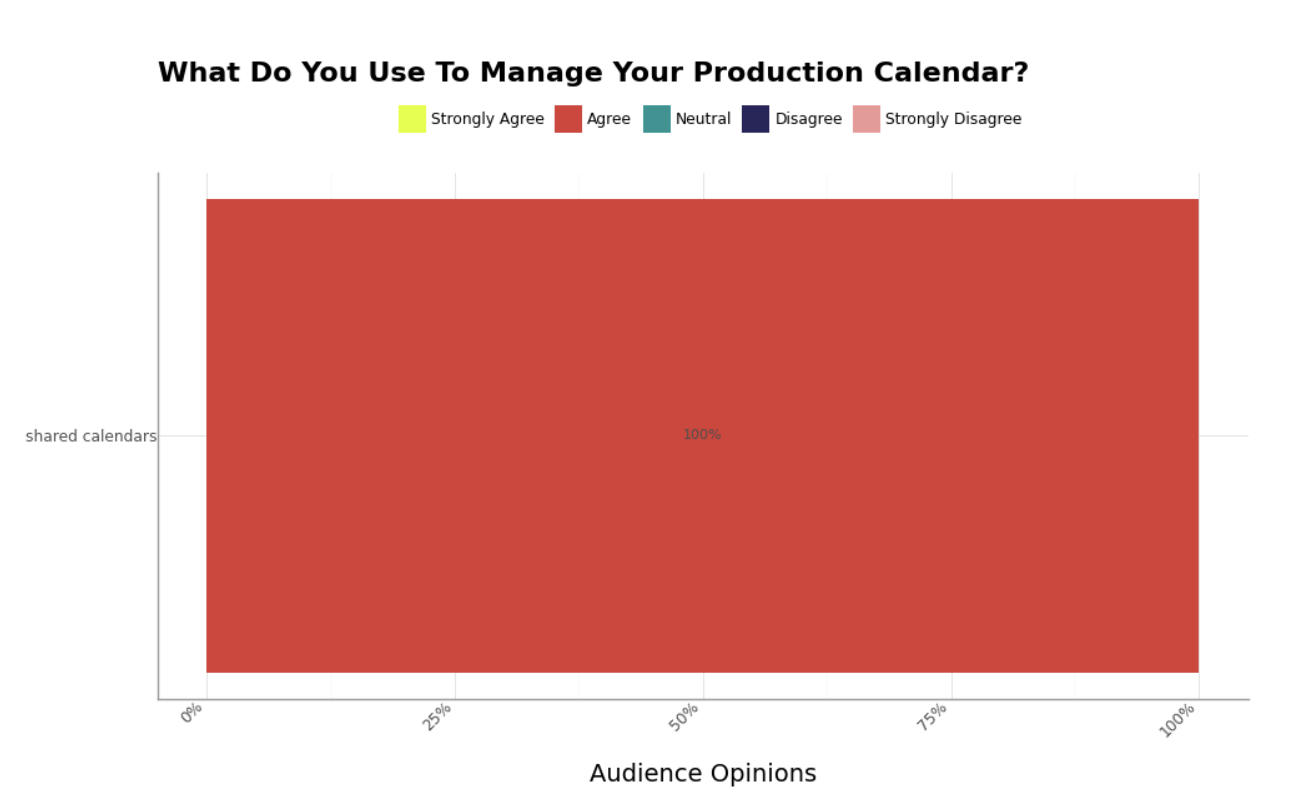
Shared calendars are proven to boost productivity, improve communication and collaboration, and streamline processes. For everyone we analyzed, this was true, with 100% agreeing that shared calendars were how they managed their production schedule. With everyone able to see exactly what is required when, filmmaking becomes so much more efficient and focused.
What City Are You Based In?
46% of our independent filmmakers are definitely based in New York City
The Big Apple is the location of choice, with other cities coming in far behind:
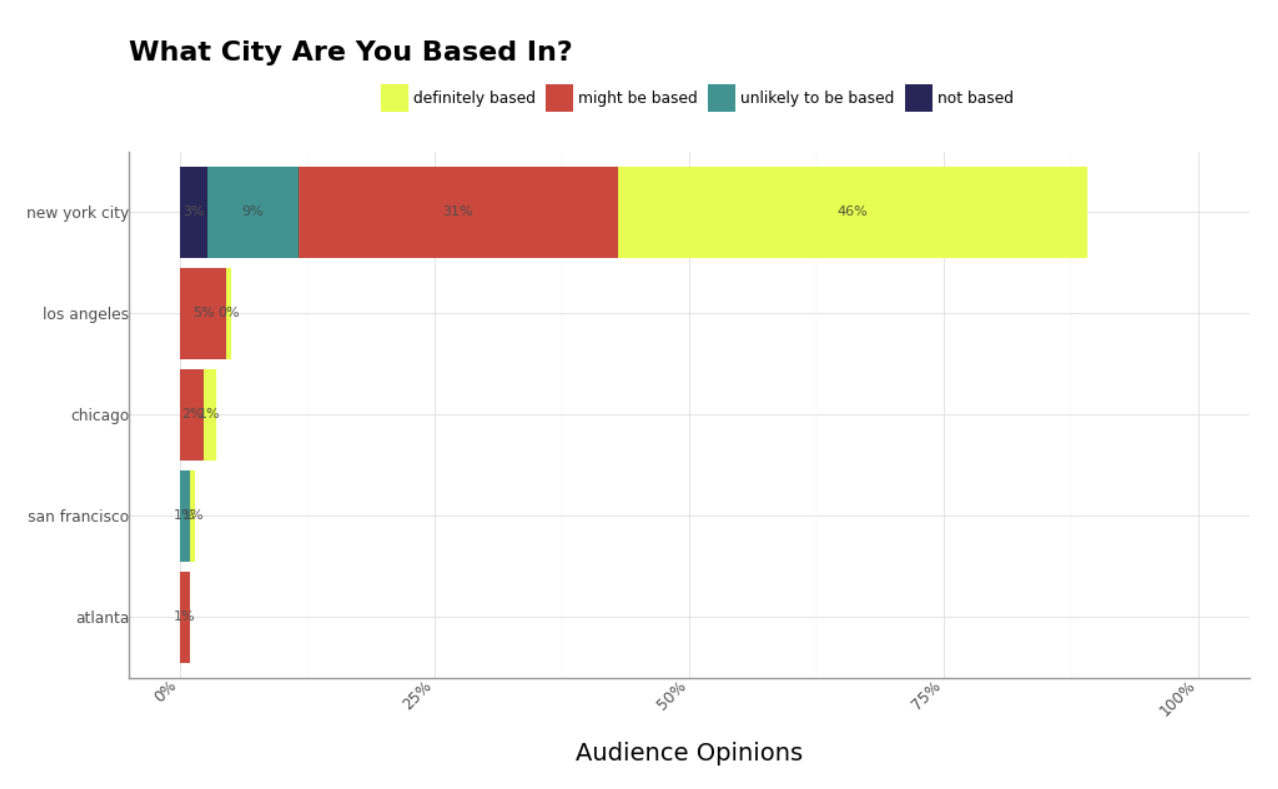
Los Angeles may be home to Hollywood, but for our audience, only 5% might be based here. In contrast, 46% are definitely based in New York, and 31% might be based in this city. Just 9% were unlikely to be based in the Big Apple, while only 3% said they were not based here. As New York has long had a thriving film and television industry, it’s perhaps not surprising that so many people are based here. Reports from the NYC Mayor’s Office of Media and Entertainment show that the NY film and TV industry supports approximately 185,000 jobs, pays $18.1 billion in wages, and $81.6 billion in total economic output annually, making the city very appealing for anyone working or wanting to break into film.
There were also a handful of people based in Chicago and San Francisco, and Atlanta. With 1% definitely based in Chicago and another 1% in San Francisco. Another 2% might be based in Chicago and 1% in Atlanta, while 1% were unlikely to live in SF. These low numbers reinforce just how many people are based in New York and how popular the city is for filmmaking.
In a fast-paced, highly collaborative industry like filmmaking, where every second counts and costs a great deal of money, the right production software can make all the difference. From script management to scheduling, creative tools to collaboration features, these findings show that what truly matters is how seamlessly a platform supports the way filmmakers work. With the right film production software, so much more is possible in a much shorter time.
Methodology
Sourced using Artios from an independent sample of 130,979 independent filmmaker opinions in the United States across X, Reddit, TikTok, LinkedIn, Threads, and BlueSky. Responses are collected within a 50% confidence interval and a 5% margin of error.
- About the representative sample:
- 35% of the audience is between 25 and 54 years of age.
- 53% identify as male and 47% as female.
- 41% earn between $120,000 to $200,000.
- The largest percentage (30%) is located in the South Atlantic US.
Best Film Screenwriting Software US in 2025
Find out what independent filmmakers want most in screenwriting software—from AI tools and cloud storage to collaboration features and bold design—and see how creative needs are shaping the future of writing platforms.
Film Task Management Statistics: USA 2025
Discover key film task management statistics from 1,063 independent US filmmakers in 2025. Learn how they handle deadlines, tools, team updates, and task dependencies to keep productions on track.


